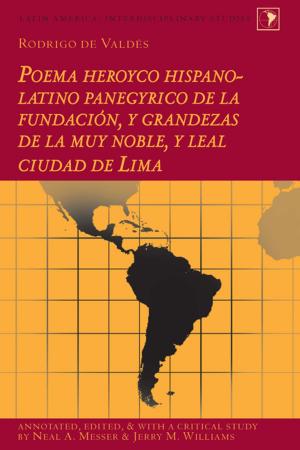Balzacs Cane
Translated with an Introduction by Marta L. Wilkinson
Fiction & Literature, Literary Theory & Criticism, French, European| Author: | ISBN: | 9781433140709 | |
| Publisher: | Peter Lang | Publication: | April 13, 2017 |
| Imprint: | Peter Lang Inc., International Academic Publishers | Language: | English |
| Author: | |
| ISBN: | 9781433140709 |
| Publisher: | Peter Lang |
| Publication: | April 13, 2017 |
| Imprint: | Peter Lang Inc., International Academic Publishers |
| Language: | English |
Balzac’s Cane is an English translation of Delphine de Girardin’s 1836 novella, La Canne de M. de Balzac, which centers around a protagonist named Tancred Dorimont, a brilliant young man plagued by his devastating good looks. In a social context in which appearance is everything, it seems for several chapters that beauty will break, rather than make, this young man’s fortune. One evening as Tancred seeks to forget his problems by spending an evening at the opera, he observes M. de Balzac and learns the secret to this famous author’s ability to know the innermost secrets of all walks of life with such detail and intimacy; M. de Balzac’s cane, a famously hideous walking stick, has the power to render the bearer invisible. A deal, which straddles the line between a favor and blackmail, is worked out between these two men and the cane comes into Tancred’s possession. With this tool Tancred is able to overhear state secrets, make his fortune, and then set his sights upon finding a woman truly worthy of his love. Voyeurism, surveillance, courtship, feminism, authorship, and the vanishing distinction between public and private lives are all raised in this novella. This work will be a useful text in either French literature or comparative survey courses due to its examination of contemporary nineteenth-century life, social organization and morals, its parody of bildungsroman and romance novels, and its combination of genres: several lengthy poems are an essential part of the novella’s text.
Balzac’s Cane is an English translation of Delphine de Girardin’s 1836 novella, La Canne de M. de Balzac, which centers around a protagonist named Tancred Dorimont, a brilliant young man plagued by his devastating good looks. In a social context in which appearance is everything, it seems for several chapters that beauty will break, rather than make, this young man’s fortune. One evening as Tancred seeks to forget his problems by spending an evening at the opera, he observes M. de Balzac and learns the secret to this famous author’s ability to know the innermost secrets of all walks of life with such detail and intimacy; M. de Balzac’s cane, a famously hideous walking stick, has the power to render the bearer invisible. A deal, which straddles the line between a favor and blackmail, is worked out between these two men and the cane comes into Tancred’s possession. With this tool Tancred is able to overhear state secrets, make his fortune, and then set his sights upon finding a woman truly worthy of his love. Voyeurism, surveillance, courtship, feminism, authorship, and the vanishing distinction between public and private lives are all raised in this novella. This work will be a useful text in either French literature or comparative survey courses due to its examination of contemporary nineteenth-century life, social organization and morals, its parody of bildungsroman and romance novels, and its combination of genres: several lengthy poems are an essential part of the novella’s text.















